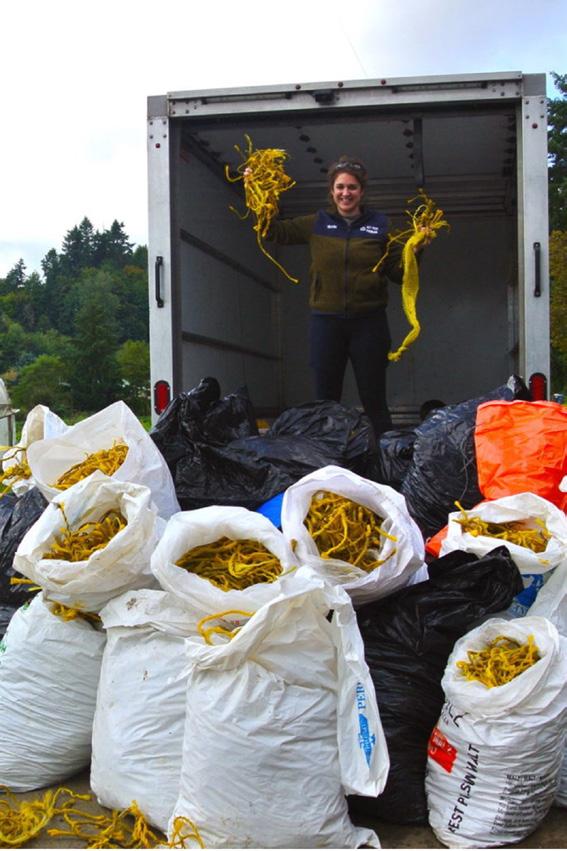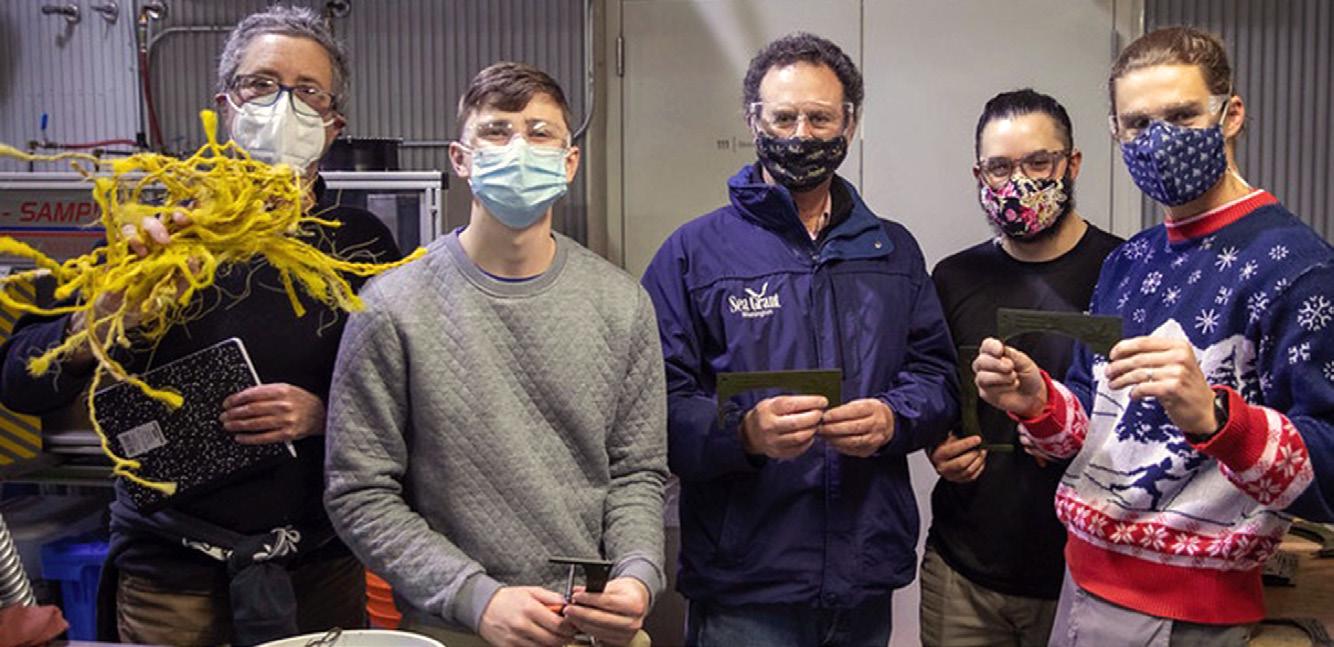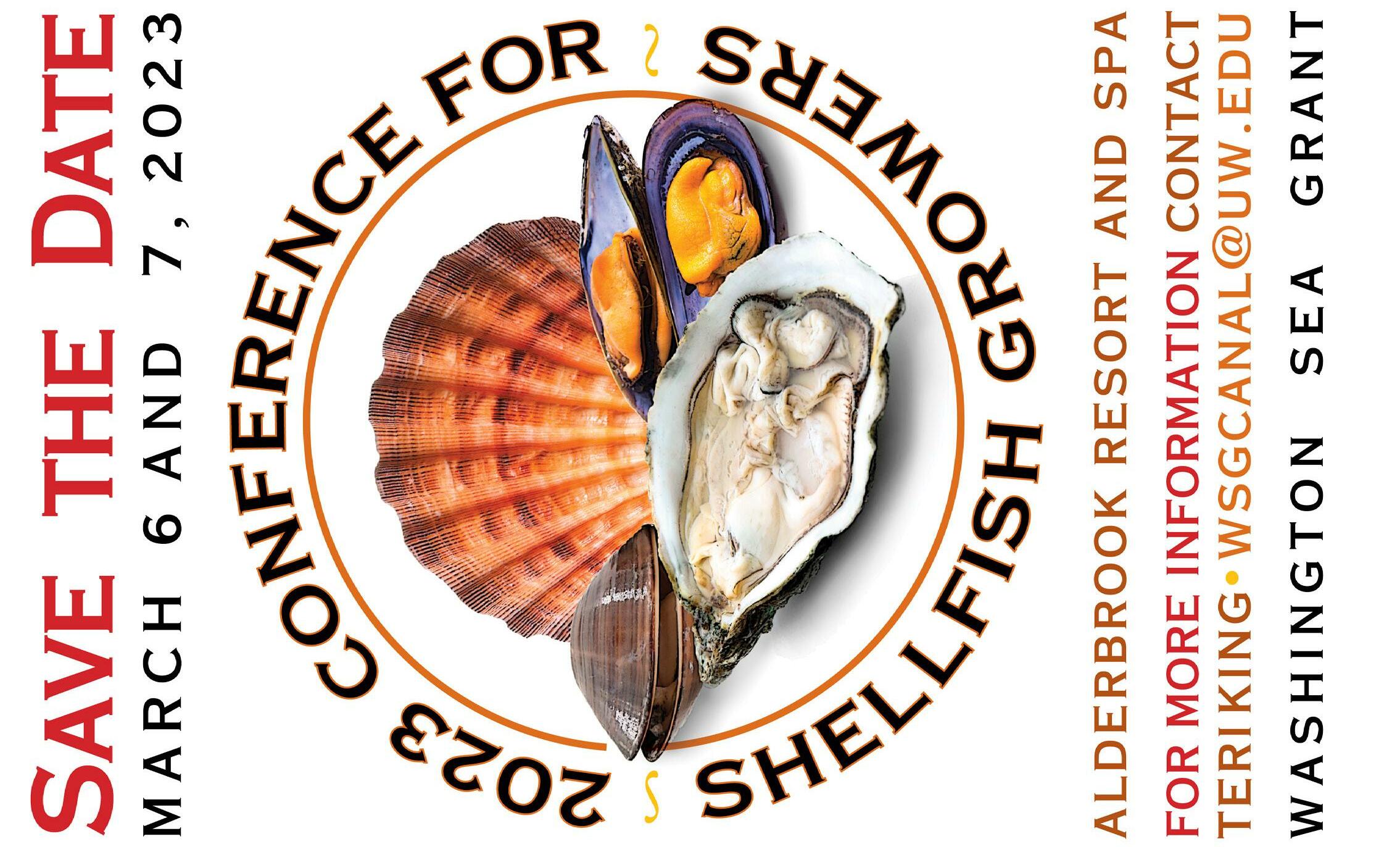
2 minute read
Finds New Life as Crab Gauges
DEBRIS FROM SHELLFISH AQUACULTURE FINDS NEW LIFE AS CRAB GAUGES
WSG supported an innovative pilot project repurposing marine debris, transforming it into a useful tool for recreational crabbers
By Benjamin Haagen, WSG Science Communications Fellow
Aquaculture in the Salish Sea brings both benefits and challenges to coastal communities and ecosystems. The yellow aquaculture rope commonly used in shellfish farming is contributing to a key environmental issue facing the world today: plastics pollution. This issue is being addressed in a novel way by Nicole Baker, founder of Net Your Problem in Ballard, and the lab of Nicole Hoekstra, who is a plastics and composites engineer at Western Washington University: the team is giving new life to the yellow rope that washes ashore by upcycling it into crab gauges. Plastics pollution is a complex issue that is exacerbated by the material’s whole lifecycle, from the production of the material, to the misuse of plastic products, to the lack of proper disposal and removal from the environment. Additionally, plastic materials are typically made using fossil fuels, and roughly 14 million tons of plastic inevitably ends up breaking down in the ocean into smaller and smaller “microplastics” that harm marine life. Crab gauges are used to measure the width of the carapace (the upper shell) of crabs caught in fishing traps to assess whether they meet size requirements set by the Washington Department of Fish and Wildlife in order to keep the crab. If the captured crab does not meet this size requirement, which is species- and region-specific, it is released. Turning old aquaculture rope into a tool that is essential to a local fishery offers a sense of symmetry: “It’s a nice circular design where you’ve collected debris from a fishing industry and are putting it back into the same industry,” Hoekstra says. The yellow rope is first collected through community beach clean-ups led by project partners, such as the Twin Harbors Water Keepers in Southwest Washington. The project team began transforming the gathered rope into crab gauges in a pilot project in December 2021. Washington Sea Grant was an early supporter of the pilot project and quickly distributed the gauges to the boating community through outreach events. Students working with Hoekstra are continuing to expand on the crab gauge project by designing and manufacturing molds for other outreach materials for Washington Sea Grant. Clam gauges, which serve the same purpose and function similarly to crab gauges are being considered for Washington Sea Grant to share at outreach events around Western Washington. Students are also beginning to develop rangefinders for boaters to keep safe distances from whales in the Salish Sea and they recently connected with a start-up company based in Everett to manufacture game boards for a new ecology -focused board game. This work is also funded by the NOAA Marine Debris Program, headed by Pacific Northwest Regional Coordinator Andrew Mason.
Before the yellow rope went through the transformation. Photos by Taylor Kelliher.
Below: Aaron Barnett, center, with a team from Western Washington University.

Washington Sea Grant
College of the Environment University of Washington Box 355060 3716 Brooklyn Avenue NE Seattle, WA 98105-6716
seagrant@uw.edu wsg.uw.edu Twitter: @WaSeaGrant Facebook.com/WaSeaGrant Instagram: @WaSeaGrant
Editor, Samantha Larson; Designer, Robyn Ricks; Assistant Director for Communications, MaryAnn Wagner; Communications Coordinator, Ashli Blow; Technical Advisor, Karen Morrill-McClure. © Washington Sea Grant; all photos WSG except as noted. ©2022 WSG-MR 22-03








